Our latest mural was painted as a part of the Planet Repairs Action Learning Educational Revolution (PRALER) – PRSC’s Volunteer Co-ordinator Nils explains what it’s all about!
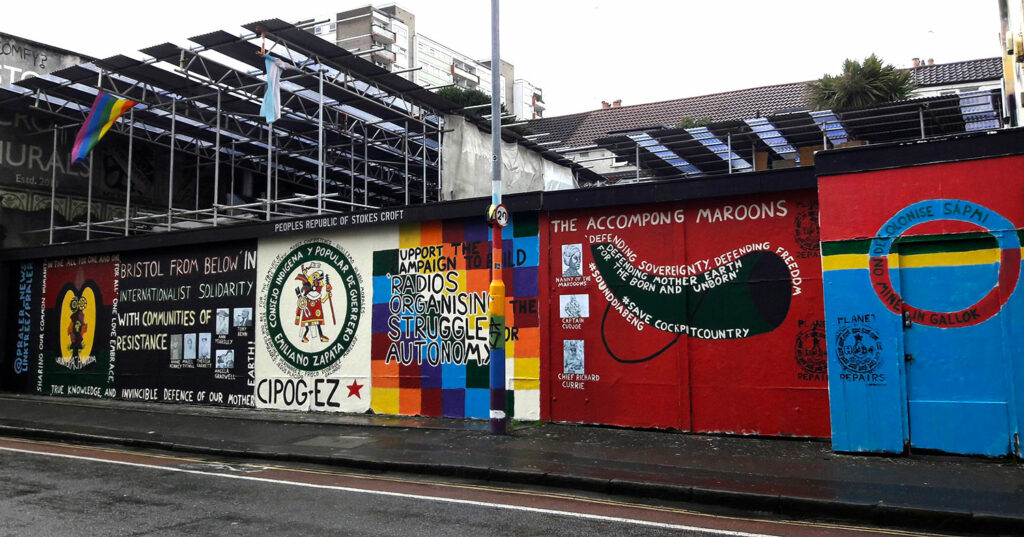
Planet Repairs means the combination of:
- Environmental Justice: The restoration of ways of being and benefiting from the land and its resources, away from exploitation and towards interconnectedness.
- Cognitive Justice: Understanding that there are many forms of knowledge: global/scientific/indigenous/local. And they all should co-exist together. Cognitive justice requires undoing the miseducation that has been imposed on us through the ‘universal’ understanding of education that sees Western forms of knowledge as the only legitimate form of knowledge. This act is an act of repairing our minds.
- Reparatory Justice: Requires stopping the harm and building holistic repairs. This involves us taking our lands back -building sovereignty – exercising our right to self-determination and supporting true repair.
Sections of the mural explained, starting from the left:
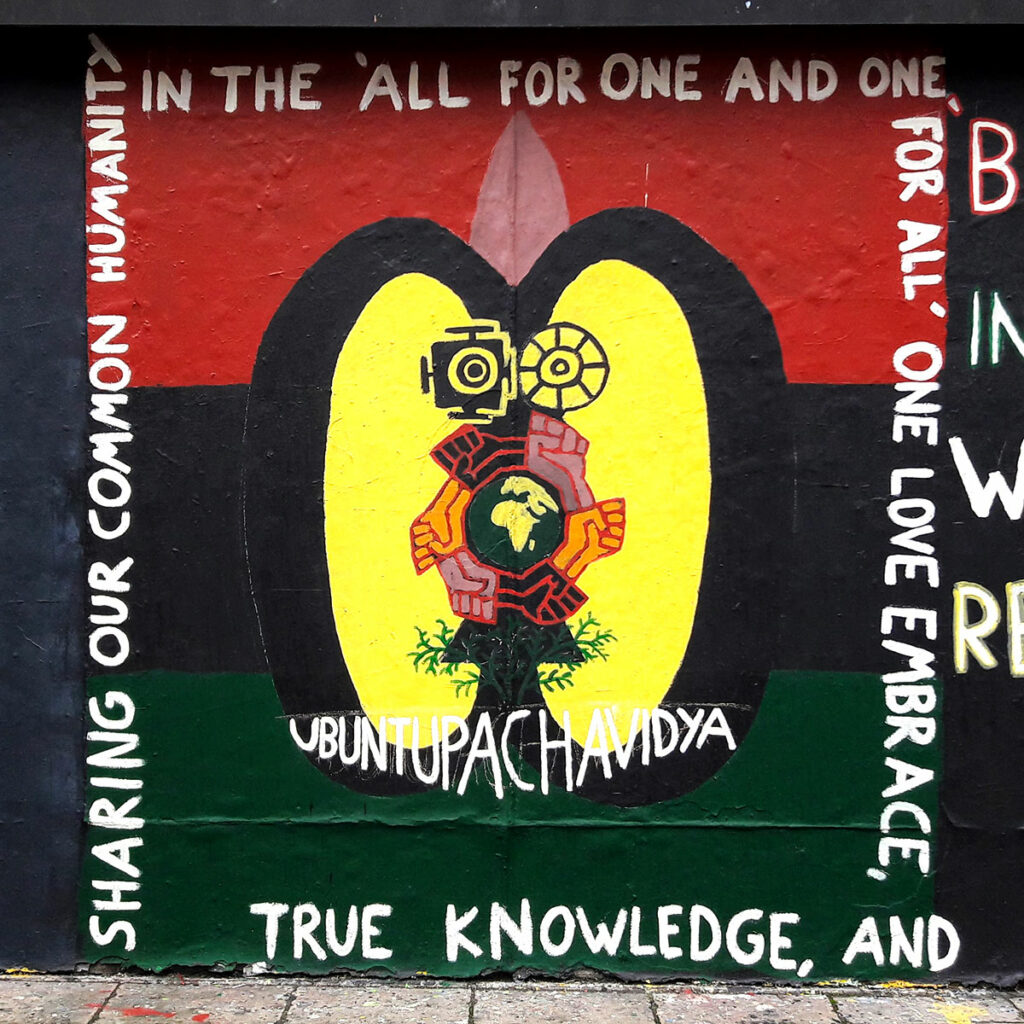
1. The background is the red, black and green of the Pan-Afrikan Flag with the symbol of UUBUNTUPACHAVIDYA painted on top, which is a Global Justice conceptual framework of Intercultural Communion for the Internationalist Solidarity Defence of human, peoples’ and Mother Earth’s Rights.
- Afrikan concept of “Ubuntu”; (seeing one’s own Humanity in the shared Humanity of all peoples of the World )
- Plus the indigenous concept from Abya Yala (so-called Latin America) of “Pachamama” (Living Mother Earth);
- Together with the indigenous Asian concept of “Vidya” (true Knowledge);
Altogether to mean “Sharing our Common Humanity in the ‘All for One and One for All’ One Love Embrace, true Knowledge and invincible Defence of our Mother Earth”!
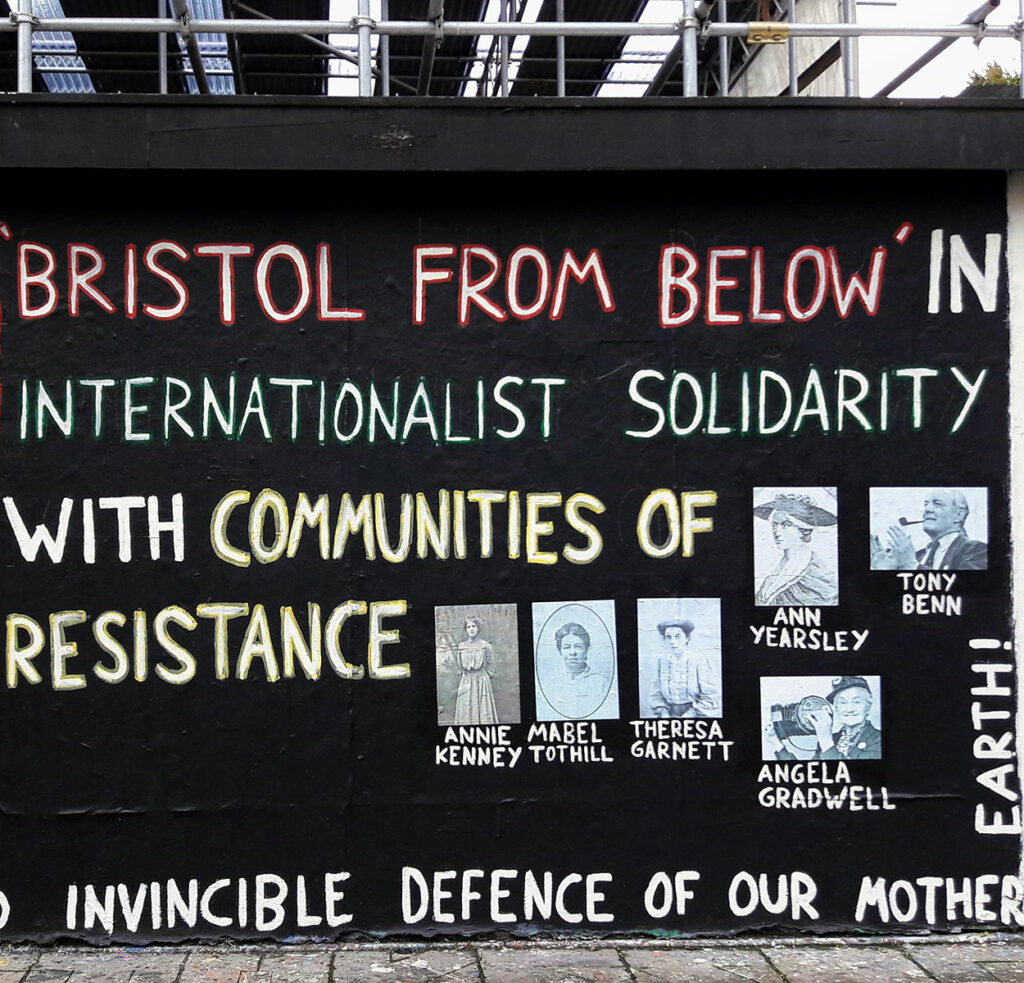
2. ‘Bristol from Below’ refers to what the Zapatista Army for National Liberation (EZLN) from Chiapas, Mexico, called ‘Europe from Below’, or ‘Slumil K’ajxemk’op’ (Insurgent Land). Its the Europe and Bristol of the grassroots, social movements, activists, suffragettes and abolitionists which have struggled alongside those ‘from below’ in other parts of the world.
Internationalist Solidarity was explained by Samora Moises Machel as:
“Internationalist Solidarity is not an act of charity; it is an act of unity between allies fighting on different terrains toward the same objective. The foremost of these objectives is to aid the development of humanity to the highest level possible.”
A few people representing Bristol in this context are Ann Yearsley, Tony Benn, Annie Kenney, Theresa Garnett, Angela Gradwell and Mabel Tothill, but there are many, many more like them.
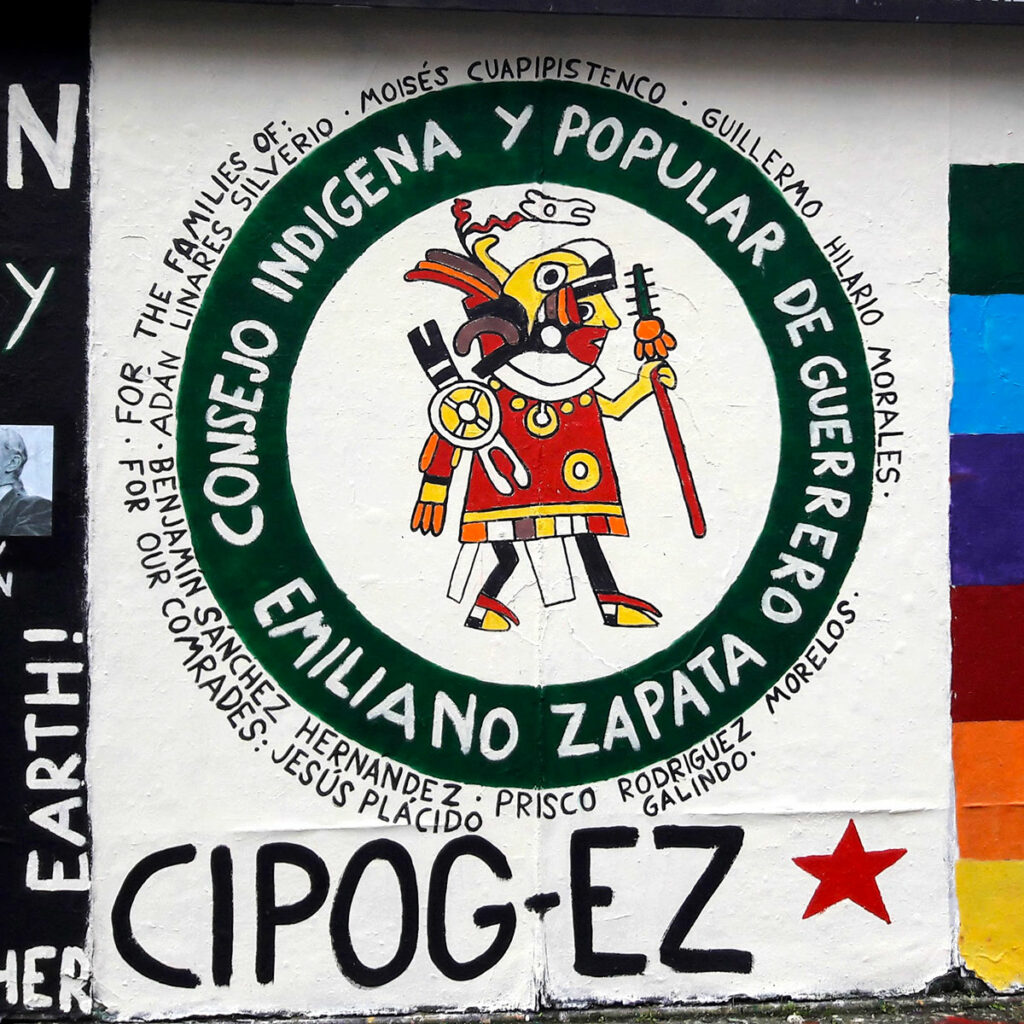
3. The Popular Indigenous Council of Guerrero – Emiliano Zapata is a council made up of 24 Indigenous communities that have been defending their territories against transnational mining companies and narco-paramilitary groups. On the 5th November this year Adán Linares Silverio, Moisés Cuapipistenco and Guillermo Hilario Morales from the CIPOG-EZ were murdered for being part of the struggle, and their families as well as other community activists are threatened.
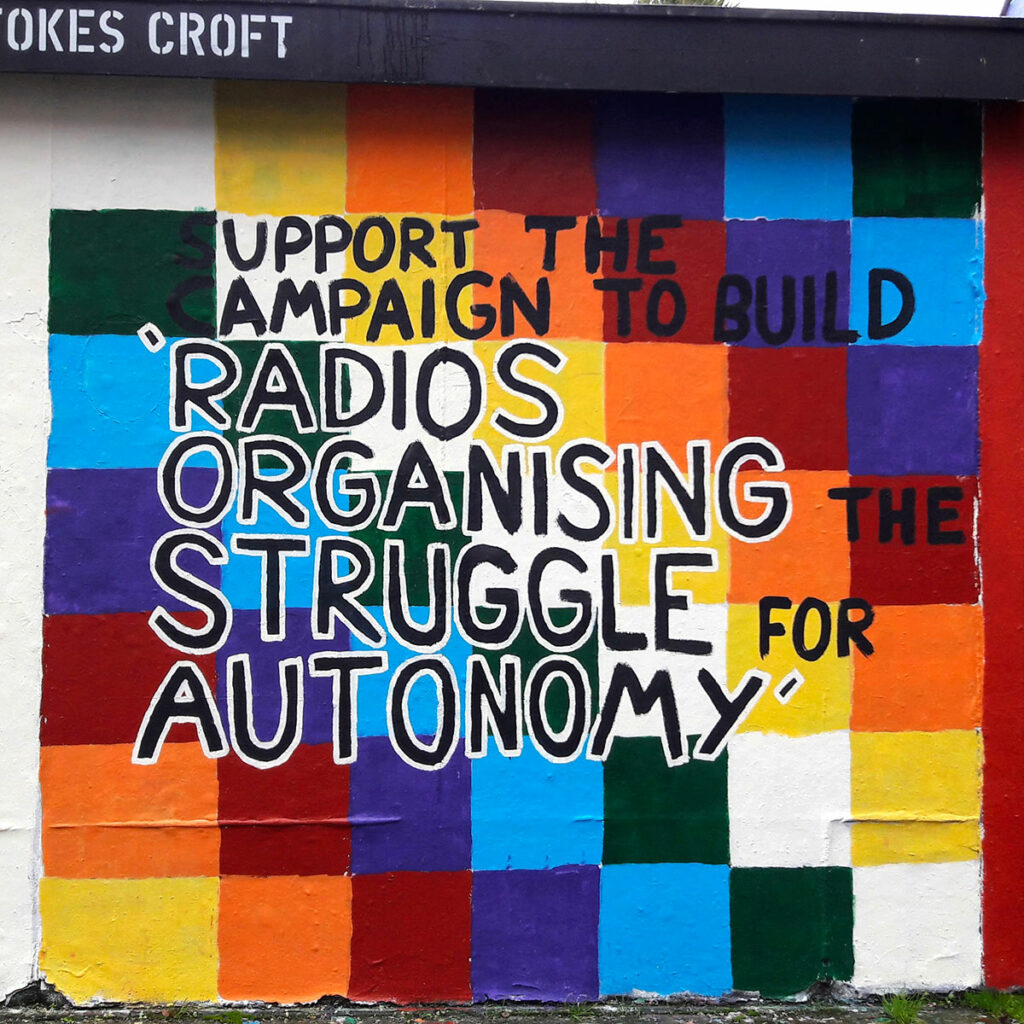
4. On the background of the Wiphala flag we are encouraging support for the CIPOG-EZ campaign to build the ‘Radios Organising the Struggle for Autonomy’ . You can listen to a radio show on Longthrow Radio in support of the CIPOG-EZ here.
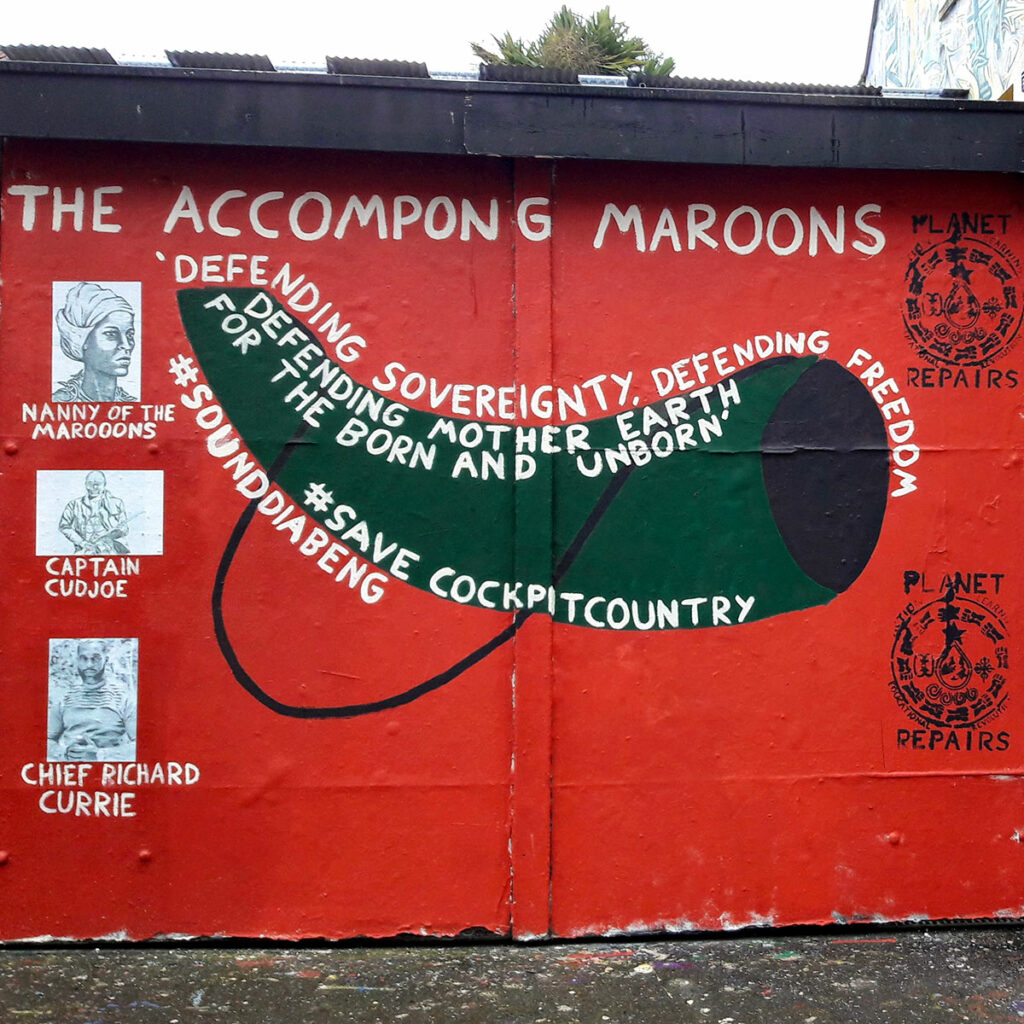
5. The background is the flag of Accompong, a sovereign nation in Cockpit Country, Jamaica, home to the Maroons who fought of the Spanish and British colonisers and who established their autonomy in 1739. Currently they are protecting their lands from a US mining company. Nanny of the Maroons and Captain Cudjoe were both part of the historical struggle, and Richard Currie is the current chief of Accompong Maroons.
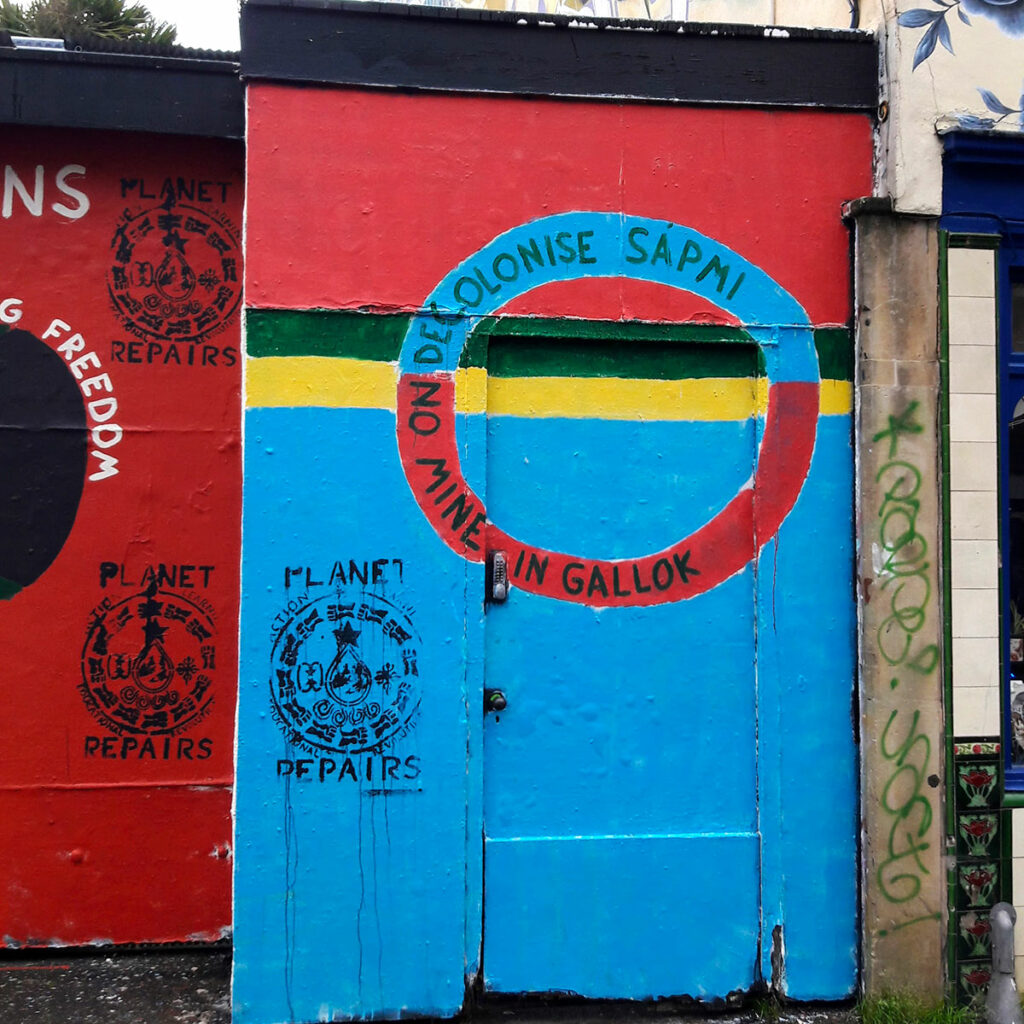
6. The red, blue, green and yellow is the Sapmi flag, the only officially recognised indigenous territory in Europe, located in northern Scandinavia. The Jåhkågaska tjiellde is a community which have been resisting the British company Beowulf Mining’s plans for a mine on their lands in Gallok, near Jokkmokk.

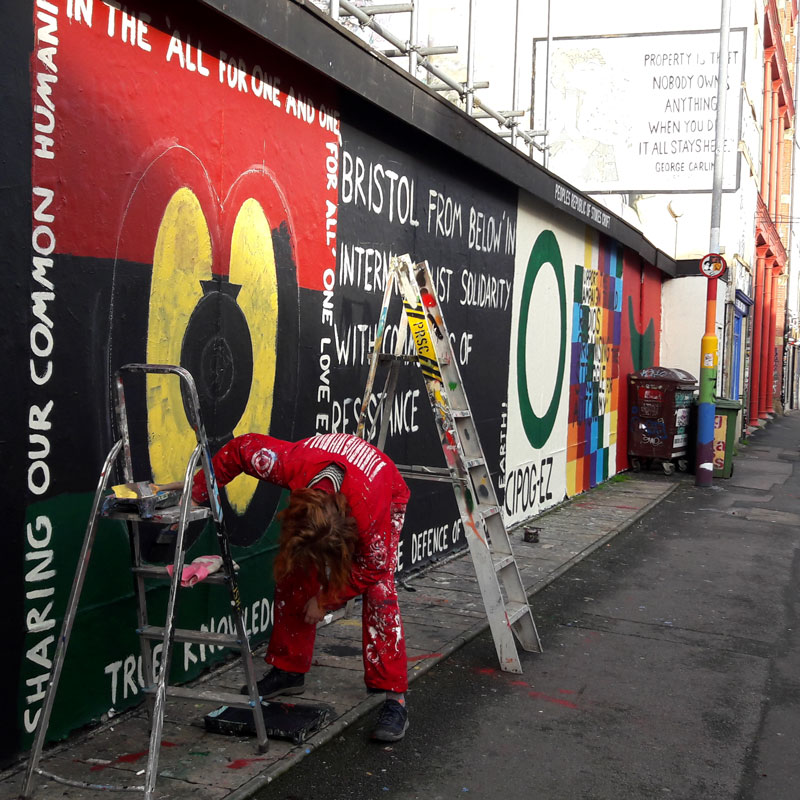
CIPOG-EZ have seen the mural and sent a message in response:
Good day comrades, its gives us much happiness to know that we are not left alone, so we are as well sending strong and combative greetings to those in the muralist collective, and to the organisations which are always offering this solidarity from the UK, and to PRALER. Receive these greetings in the name of the comrades, children, of our grandmothers and grandfathers of the mountains below Chilapa de Alvarzes, the high mountain of Guerrero. We dont surrrender and we dont give up. The struggle continues comrades. Thank you for also sharing the struggles of other siblings in other geographies.
“Buen día compxs, nos da mucho y alegría saber q no nos están dejando solos, así también enviamos fuertes saludos combativos a los del colectivo muralista, y a las organizaciones q siempre nos están brindando esa solidaridad desde el reinó unido y a PRALER, reciban saludos a nombre de los compañeros, compañeras, ñiños, ñiñas, de nuestr@s abuelas y abuelos de las montaña baja de chilapa de alvarez, montaña alta de Guerrero, montaña- costa chica de Guerrero. No nos rendimos y no claudicamos. La lucha sigue compañerxs. Gracias por también compartirnos la lucha de otros hermanos y hermanas en otras geografías. Saludos.”
This mural (and the Gatton Rd one from October 2022, pictured below) was discussed on Ujima Radio’s Outlook with Glocal show on Friday 13 January – listen here (from around the 45 min mark) »
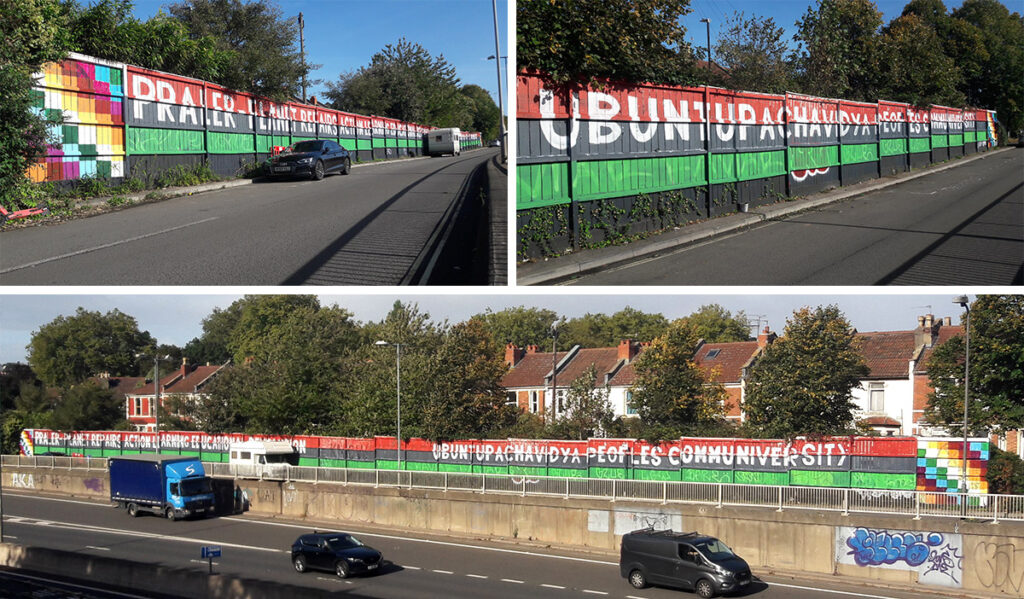

This is brilliant, I 💜 the confluence of indigenous knowledge and imagery with local trailblazers and fighting spitits from Bristol